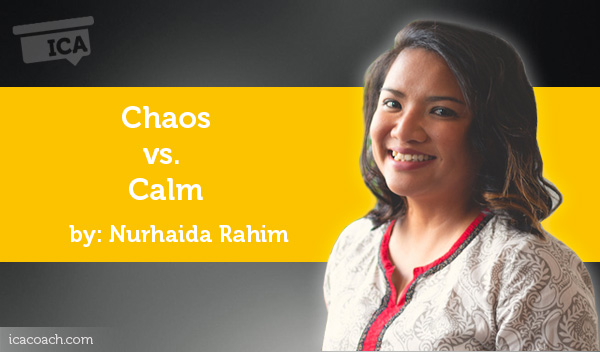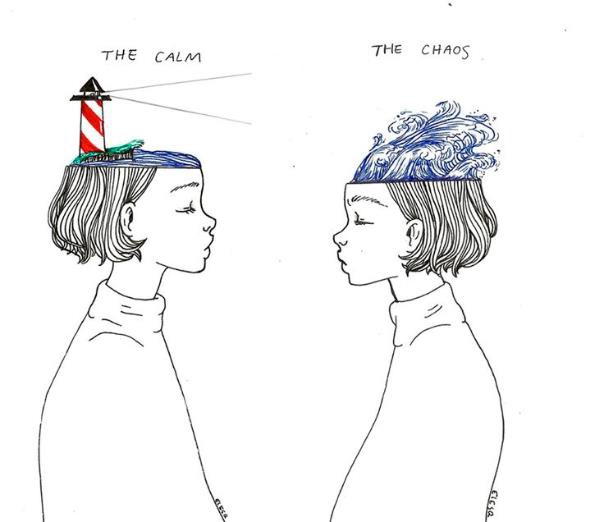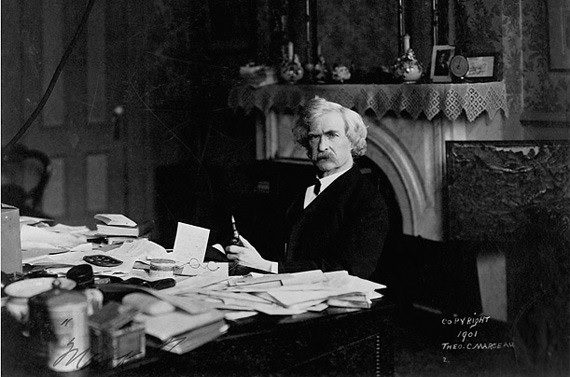
A Coaching Power Tool Created by Nurhaida Rahim
(Burnout Recovery Coach, SINGAPORE)
Background
So right now, as I am writing this power tool assignment, I am hoping my environment and mostly my head would allow me to think and concentrate on the words I am about to pour out. Wait. I’m getting up to shut the windows, it’s noisy outside with the construction going on. Maybe I’ll make myself a cup of ice tea. It’s a really hot summer this year around. Oh man, that pile of dirty clothes really need to be washed. And the bed sheets. Right, clean the room. It’s really loud outside, with the construction. How am I possibly going to work like this? Phone rings. My partner frantically asking, “Did you see my passport anywhere?! I’m at the airport and I can’t find it!” What?! Panic. Runs around, looking for a passport. How you can you be so forgetful, I muttered annoyingly. Found it, the mad dash to the airport. God, cab drivers, just stop honking. Oh wait, did I lock the door? Cab driver tunes on this radio, static (ouch!), found the news channel and words came out. Dropped passport, kissed goodbye and headed home. Driver speaks to me in Turkish and I don’t understand Turkish even if I have lived in this country for some time. Well, maybe I should really take language classes. Finally, I got home and construction noises have stopped. Time to continue my assignment. And do laundry, clean the house and have a cuppa.
The above scenario may be familiar to a number of us. A bunch of competing activities looking for our attention and the feeling like there is not enough of ourselves to go around. Being overwhelmed by these tasks clearly is not something we want to be carrying on our shoulders all the time. And we are probably acquainted with the idioms ‘calm after the storm’ and ‘calm before the storm.’
In science, the Chaos Theory reminds us that nonlinear things cannot be controlled, unlike gravity or chemical reactions. Our lives and the world we inhabit can be complex, unpredictable and full of surprises. Many days, our lives are full of the unexpected. Does this mean our lives are doomed to chaos or do we have the power to steer the course and find safe harbour?

Image source: “the chaos / the calm” by Elliana Esquivel aka Elesq.
Defining Chaos cha·os \ˈkā-ˌäs\
The term chaos is often understood as a state of utter confusion, a confused mass or mixture or to describe an unorganised state of matter or the inherent unpredictability in behaviour.
Chaos can be used to describe various conditions from the economy to the state of one’s mind. A major blackout in a city like New York can cause chaos on the streets. We have seen chaos and meltdowns in the stock market. Severe weather patterns can cause mayhem and damages to both people and property. I used to know a colleague who was just all ‘over the place’ – her table was rather messy with various papers, she was always in a rush somewhere and often quite fickle about her opinions when the team is ready to move forward with what has agreed upon. Lovely as she was, her rather ‘turbulent’ style kept us exhausted.
Perhaps the most basis chaotic conditions can be found in our homes and lives. From screaming children to dirty clothes piled in the corner waiting to be picked up. In the workplace, chaos can come in the form of tight deadlines, disgruntled colleagues or the lack of motivation.
Chaos can be short or long lived. Chaos can be big or small. It can be a physical or mental state of being. On the former, chaos in our homes and lives can present itself in the things we can physically sense (see, touch, smell, hear or taste). On the latter, chaos can be a state of mind.
Worry, frustration, confusion and fear are all components of a chaotic mind. They may then manifest in sleeplessness, loss of motivation, general tiredness and unhappiness. A chaotic mind that is constantly chattering with negative thoughts can be an obstacle to achieving one’s goals. Such a mental state of often doing not inspire growth or the opportunity to move forward, simply because the mind and thus inevitably the individual remains ‘stuck’ in that cluttered mindset.
Defining Calm \ˈkäm, ˈkälm, ˈkam, ˈkȯ(l)m\
Calm is generally accepted to mean a state of tranquillity or a condition free from agitation, stimulation or disturbance. This is often associated with serenity, quiet and peace. Additionally, we also use the term ‘calm’ to refer to the act of making a person/thing/situation less active or disturbed – “the soothing music calmed her down.”
Google the word ‘calm’ and you will be treated to images of blue waters, walking under a canopy of the rainforest, fluffy white clouds and of course the infamous ‘Keep Calm and Carry On’ motivational poster produced by the British government in 1939 for World War II.
But calm is not just about picturesque landscapes and catchy slogans.
It is creating the ability to know that everything can be managed and addressed even with the various noises around us. It is finding that quiet space that helps balance the noises in both our physical surrounding as well as in our minds.
When we come home from work, a calm home inspires serenity. It is a place of joy and happiness, where you can relax, socialise and recharge your battery. To create a calm physical space would mean giving some attention to how we manage these spaces. Be it the home or the workplace, this could entail decluttering, organising, tidying up, and creating ‘quiet time’ for Mom and Dad and so on.
Alongside our physical space, a calm state of mind is equally pertinent to our health. This is probably more in a digital age filled with never-ending to-do lists and new technology clamouring for our attention. A calm mind can help us keep the focus on the world, achieve our goals, maintain good health and keep sane. When the mind is not cluttered with various thoughts competing for attention, we are giving ourselves a chance to take a moment and reflect on our situations and determine the approach that will allow us to enjoy the moment or truly shape the experience we want to create, not simply react and cope.
The Importance of Being Earnest by Oscar Wilde – has this to say,
Well, I can’t eat muffins in an agitated manner. The butter would probably get on my cuffs. One should always eat muffins quite calmly. It is the only way to eat them. I say it’s perfectly heartless you’re eating muffins at all, under the circumstances.
Chaos versus Calm to Chaos and Calm
Unless we have reached transcendence and can detach ourselves from all chaotic situations, chaos will continue to form a part of our lives and the environment we live in. In a study conducted in 2011 by researchers at Princeton University, results noted that physical clutter i.e. a form of chaos can negatively affect one’s ability to focus and process information and experiences. Simply put, when the environment you work and live in is cluttered, the chaos restricts your ability to focus.
And clutter is not just physical. It is also mental. It includes the files on your laptop (remember the multiple drafts of a report you did for work?), social media notifications, and anything that ‘ping’ to grab your attention. When your brain has to deal with various digital clutter at work, socially and at home, it has no space to filter, focus, think and be creative. But clutter, like many other things, is not always black and white. It is not always one versus the other.

Mark Twain at his desk. Image source: Office Snapshots
Research has shown that messy work areas are signatures of creative minds. It is the antithesis of the clean desk concept – clean desks are dormant where no thought or work has taken place. There are many famous people in history notorious for being messy and for being leaders in their field of work.
While clutter (both physical and mental) can have a negative impact on our lives, what matters is how we perceive clutter in itself. How you and I perceive clutter, and thus chaos, will likely be different. When some clutter/messiness/chaos/disorder is brought in, it has the potential to bring about new thinking, new possibilities and new combinations.
To quote Albert Einstein,
If a cluttered desk is a sign of a cluttered mind, of what, then, is an empty desk a sign?
Self Application: Words Into Practice
So which should it be?
The truth is, there is no right or wrong. For this purpose, it might help to reframe these power tools not as challenging opposites but as complementary tools. In reality, most of us have experience both chaos and calm in various ways, while perhaps leaning towards one tool.
Chaos has evidently worked for some people as they flourish under such situations and for others, they may need a calmer approach to focus and resolve critical matters. What constitutes chaos and calm is clearly a matter of perception.
In seeking to find clarity and balance between chaos and calmness, here are some practical considerations to start you off:
There are millions of resources and information on how to help individuals cope with the chaos in their lives and add more calmness. Here are some examples that have worked for me.
1. Putting Constraints
I acknowledge that I can afford to reduce the ‘chaotic’ aspect of my life to be more efficient and effective. Working in a challenging context where the situation changes frequently, I make sure to digitally switch off for at least two hours when I get home. My brain needs a rest from the ‘freneticism’ and the constantly-alert-mode. At home, we also agree to put away gadgets when having dinner. This way, I decompress my brain to allow space and room to breathe, recharge and reorganise.
2. Be Kind to Yourself
I would be disillusioned to believe that our lives can be neatly compartmentalised into ‘chaos’ and ‘calm’ boxes. We have days with nagging worries, utterly unable to focus for various reasons. And it is not easy to quieten the mind and tell it to be calm. I struggle on many days to meditate because it is not something I am used to doing. And that is perfectly okay. On those days, it is important to be kind to yourself more than anything else. Your brain does not need further stress than it already has. And on those days too, it is important to accept the thought, recognise the chaos and let it go. This is where practising mindfulness can be extremely helpful in coping with our chaotic minds.
3. Recognise There is No Right or Wrong
There is no right or wrong when it comes to chaotic and calming situations. Yes, Zuckerberg, Twain and Einstein all had messy desks and they were visionaries. But other calm individuals in history and today showed what calmness can achieve. For example, through her calm disposition, quiet observation and patience, primatologist Dr Jane Goodall was able to be present and immersed herself into the life of chimpanzees that shed light on these primates like no one ever did before. Without any intention to change the chimpanzees, she let go of her defences and watched them. And what about Rosa Parks, infamous for not giving her seat on a bus in Montgomery, Alabama in 1955 thus effectively initiating the civil rights movement? It tells us that one can be quiet, have a strong principle and make big changes in society. Her autobiography was aptly entitled, “Quiet Strength.”
Basically, success and a meaningful life are not always about one or the other. Examples in history tell us that individuals have become successful by using their chaotic/calm disposition and routines to make societal changes. Have a think where your strengths are. Tap on that. Believe in all it can be. If you flourish working in chaos/calm, embrace it and make it work. Society does not own the rules to what is calm and chaos. You do.
Coaching Application
As coaches, we must acknowledge (especially to ourselves) that our perceptions regarding chaos and calmness can be different from our client’s. We have our own biases. But it is vital that we remember that it is not in a coach’s place to bear his/her judgement upon the client. While not always easy, as coaches it is critical we remain non-judgmental. Bearing this in mind, few considerations are listed for use in a coaching session:
1. Understand the Client Values
Perceptions of what is chaos and what is considered calm differ from individual to individual. Don’t assume you know. What is the client’s understanding? What is the client’s underlying belief? What are the client’s experiences coping with chaotic and calming situations?
2. Keep Enquiring
For some deep conversations to happen, we need to keep inquiring. This means going beyond the surface and to actively listen to what is being said and what is not being said. Do not be quick to summarise from a few general statements. Ask for specifics, if needed. Get the full picture. Use your intuition. What is really going on?
3. Addressing Fears
Any change we wish to make in life requires facing our fears and addressing them. What is the fear that is holding our client back? Again, don’t assume we know our client’s fears. Do they? This may require hard work from the coach to help the client recognise the fears they have if any.
4. Setting Goals and Being Accountable
Goals can be big or small. And sometimes, all a client needs is some clarity moving forward. What would be a good outcome for the session? How can the coach help the client to achieve the goal? How can the coach help the client to be accountable for those actions?
5. Trust the Coaching Process
We hear our client say something and we sometimes tend to assume we know the answer to help them (we may not say it out loud but you know it’s in your head, you know you want to help them find a solution). Trust the coaching process to help your client get there on their own, to reach their balance/calm/chaotic/adventurous/daring side. The victory is sweeter that way.
Conclusion
In reality, chaos and calm while are polar opposites of each other are not traits one have without the other. There are some aspects of our lives that feature each of these traits. A calming nature can be help nurture and refocus the mind while a chaotic trait can help someone cultivate their creative juices. At the end of the day, it is how and what we choose to do with each that matters.